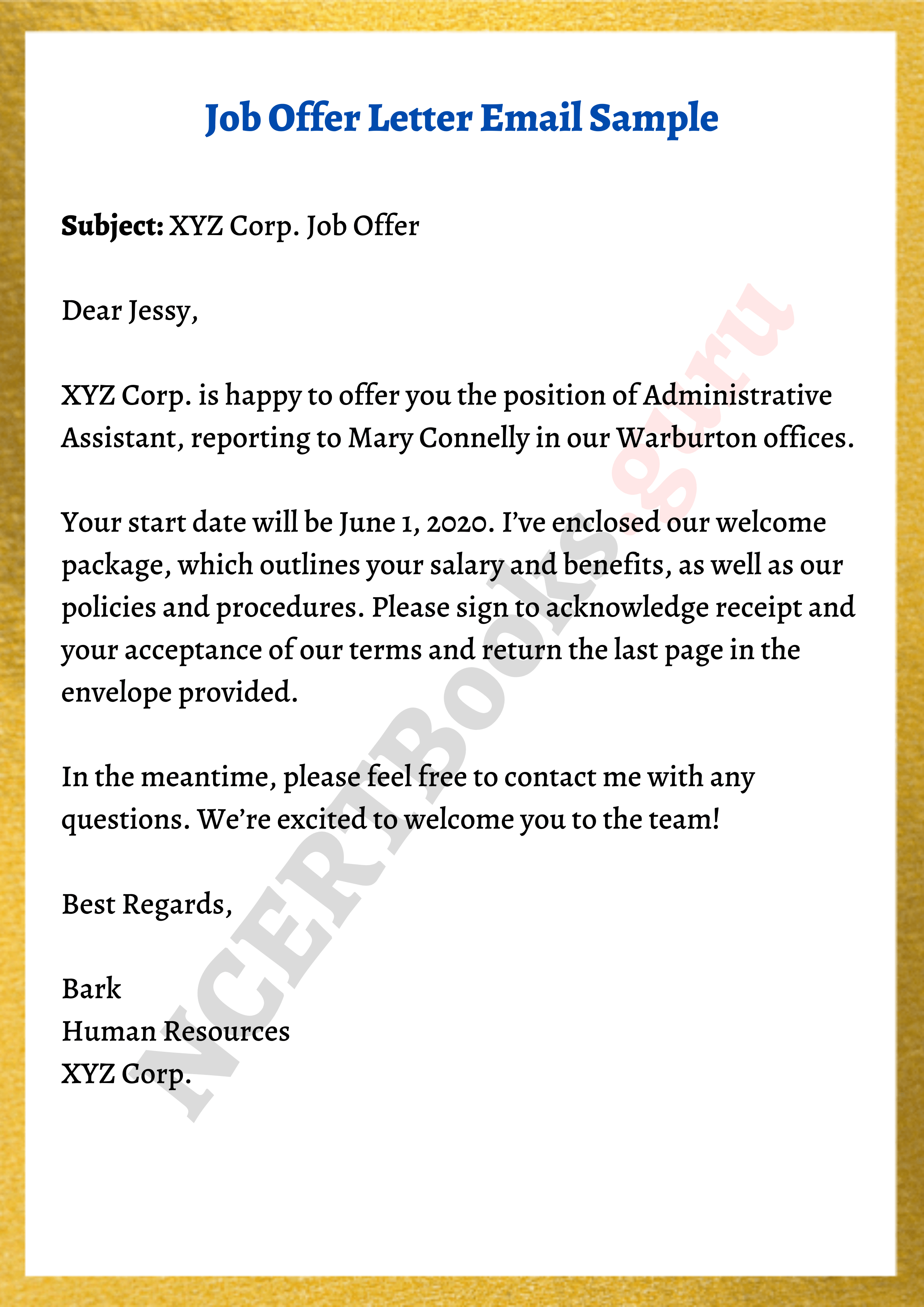Decoding the Employee Offer Letter: Your Employment Contract

The arrival of a job offer is often met with excitement, a sense of accomplishment, and maybe even a little relief. But before you pop the champagne, there's a crucial document that deserves your undivided attention: the employee offer letter. This seemingly simple piece of paper is much more than a formality; it's a legally binding contract outlining the terms of your employment. Understanding its contents is vital to ensuring a smooth and successful start to your new role.
What exactly is an employee offer letter, and why is it so important? It's a formal written communication from an employer to a prospective employee, extending an offer of employment. It sets the stage for the entire employment relationship, laying out the key terms and conditions. Ignoring or glossing over the details can lead to misunderstandings, unmet expectations, and even legal disputes down the line.
The history of formal offer letters is intertwined with the evolution of labor laws and the increasing complexity of employment relationships. While early employment agreements might have been simple verbal agreements, the need for clarity and legal protection led to the development of written documentation. Today, the employee offer letter serves as a cornerstone of this documentation, providing a tangible record of the agreed-upon terms.
The importance of a carefully crafted employee offer letter cannot be overstated. It acts as a roadmap for both the employer and the employee, clearly defining expectations from the outset. This clarity minimizes the potential for conflict and ensures that both parties are on the same page regarding salary, benefits, responsibilities, and other crucial aspects of the employment relationship.
Navigating the intricacies of an employee offer letter can sometimes feel overwhelming. One common issue is understanding the legal implications of the document. While it might not seem as formal as a full-blown contract, it carries significant legal weight. Another challenge lies in deciphering complex legal jargon and technical terms. Don't hesitate to seek clarification from HR or legal counsel if anything is unclear.
An offer letter typically includes details about the job title, start date, salary, benefits (health insurance, retirement plan, paid time off), work schedule, reporting structure, and any other relevant conditions of employment. For example, it might specify whether the position is full-time or part-time, exempt or non-exempt, and whether there's a probationary period.
Benefits of a clear and comprehensive employee offer letter include: Clarity and Transparency: Avoids misunderstandings by clearly outlining the terms of employment. Legal Protection: Provides a legally binding document protecting both the employer and employee. Enhanced Professionalism: Demonstrates a commitment to clear communication and professionalism.
Action Plan: 1. Carefully Review: Scrutinize every detail of the offer letter. 2. Negotiate: Don't hesitate to negotiate key terms like salary and benefits. 3. Seek Clarification: Ask questions if anything is unclear. 4. Accept in Writing: Formally accept the offer in writing once you're satisfied.
Checklist: Job title, Salary, Benefits, Start date, Work schedule, Reporting structure, Probationary period (if applicable)
Step-by-Step Guide to Reviewing an Offer Letter: 1. Read the entire document carefully. 2. Compare the offer to your expectations. 3. Research industry salary benchmarks. 4. Negotiate if necessary. 5. Seek legal advice if needed. 6. Accept or decline the offer in writing.
Advantages and Disadvantages of a Detailed Employee Offer Letter
| Advantages | Disadvantages |
|---|---|
| Reduces ambiguity and potential disputes | Can be time-consuming to create and review |
| Sets clear expectations for both parties | May require legal expertise to draft properly |
Best Practices: 1. Use clear and concise language. 2. Include all essential terms and conditions. 3. Ensure legal compliance. 4. Provide a reasonable timeframe for acceptance. 5. Obtain written confirmation of acceptance.
FAQs: 1. Can I negotiate my offer letter? Yes. 2. What if the offer letter is different from what was discussed verbally? The written offer letter generally takes precedence. 3. Is an electronic signature acceptable? Yes, in most cases. 4. When should I receive my offer letter? Typically after a successful interview process. 5. What if I don't understand something in the offer letter? Ask for clarification from HR or a legal professional. 6. Can I revoke my acceptance? It depends on the specific terms of the offer letter and applicable laws. 7. What should I do if the company changes the terms of the offer after I've accepted? Discuss the changes with the company and seek legal advice if needed. 8. Should I keep a copy of my offer letter? Absolutely.
Tips and Tricks: Compare the offer to industry standards. Don't be afraid to negotiate. Get everything in writing.
In conclusion, the employee offer letter is a critical document that shapes the entire employment relationship. Understanding its components, legal implications, and potential pitfalls is paramount to making informed decisions about your career. By carefully reviewing, negotiating, and seeking clarification when needed, you can ensure a smooth transition into your new role and set the foundation for a successful and fulfilling employment experience. Remember, this document isn't just a formality; it's your employment contract. Take the time to understand it, and don't hesitate to advocate for your best interests. Your future self will thank you. Don't underestimate the power of a well-crafted employee offer letter. It's the first step towards building a strong and mutually beneficial relationship with your employer. So, read it carefully, ask questions, and negotiate if necessary. It's your career, and you deserve to start it on the right foot.
Elevating your aura exploring the subtle art of minimal arm band tattoos
Conquer the california motorcycle permit test your ultimate guide
Unveiling borax whats inside this common household item













